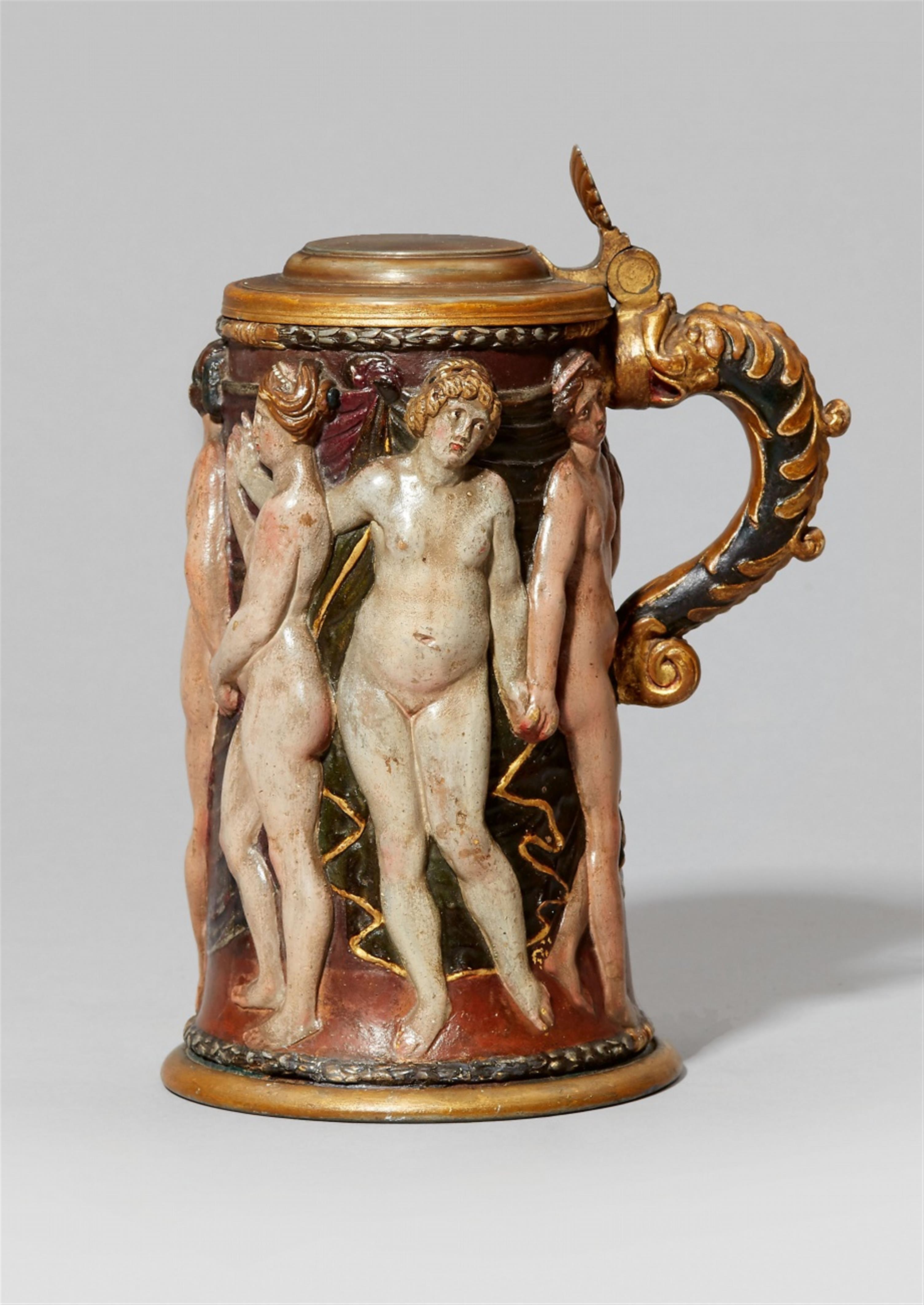An unusual earthenware tankard with a figural relief
Slightly tapering tankard with green glazed interior and polychrome decor to the relief of six women holding hands amidst draperies on the exterior. The handle presumably reattached after firing, a vertical firing crack to the area around the handle, the polychromy partially retouched. With gilt and bronze coloured pewter lid and basal ring. H 20.8 cm.
South Germany or Switzerland, late 16th / 17th C.
Johann Georg Kern (1622 - 1698) was a nephew and, as Lise Lotte Möller proves, also the successor of Leonhardt Kern. Just like Leonhardt Kern, who specialized in the processing of ivory, there are some precious drinking vessels whose design can be traced back to him. He probably used the motif of the women's circle before the cloth drapery several times with varying individual details, e.g. for the iconography "Die Sieben Freien Künste" (the ivory jug from 1658 in the Württembergische Landesmuseum) as well as for the six female nudes, which include not only the earthenware jug presented here but also an ivory tankard in the collection of the Badisches Landesmuseum Karlsruhe. It is assumed that the female nudes possibly represent the Titanids, the daughters of Uranos and Gaia and the six sisters of the Titans. They are symbolic carriers of human abilities: Thaia for sight, Rhea for female fertility, Themis for instinctive sense of order, Mnemosyne for memory and knowledge, Phoibe for reason and Thetis for motherhood.
The unusual beaker presented here suggests that Johann Georg Kern or one of his colleagues was interested in pottery and created a model based on the ivory hump. The polychrome lacquer painting was done after the fire and is an additional artistic direction, which must not have been created in the manufactory. It emphasizes the spatiality of the relief and creates a greater reference to reality. The bodies carry an individual incarnate body, the drapery of cloth behind is in three colours, gold, green and dark red. This dimension of colour is not offered by the ivory object, and it stands in clear contrast to its monochrome appearance.
Literature
Cf. a tankard with a similar form, relief appliques and stippled glaze from the latter half of the 17th century in: Wyss, Winterthurer Keramik. Hafnerware aus dem 17. Jahrhundert, Bern 1973, pl. VIII. The polychromy of this tankard is thought to be earlier.

